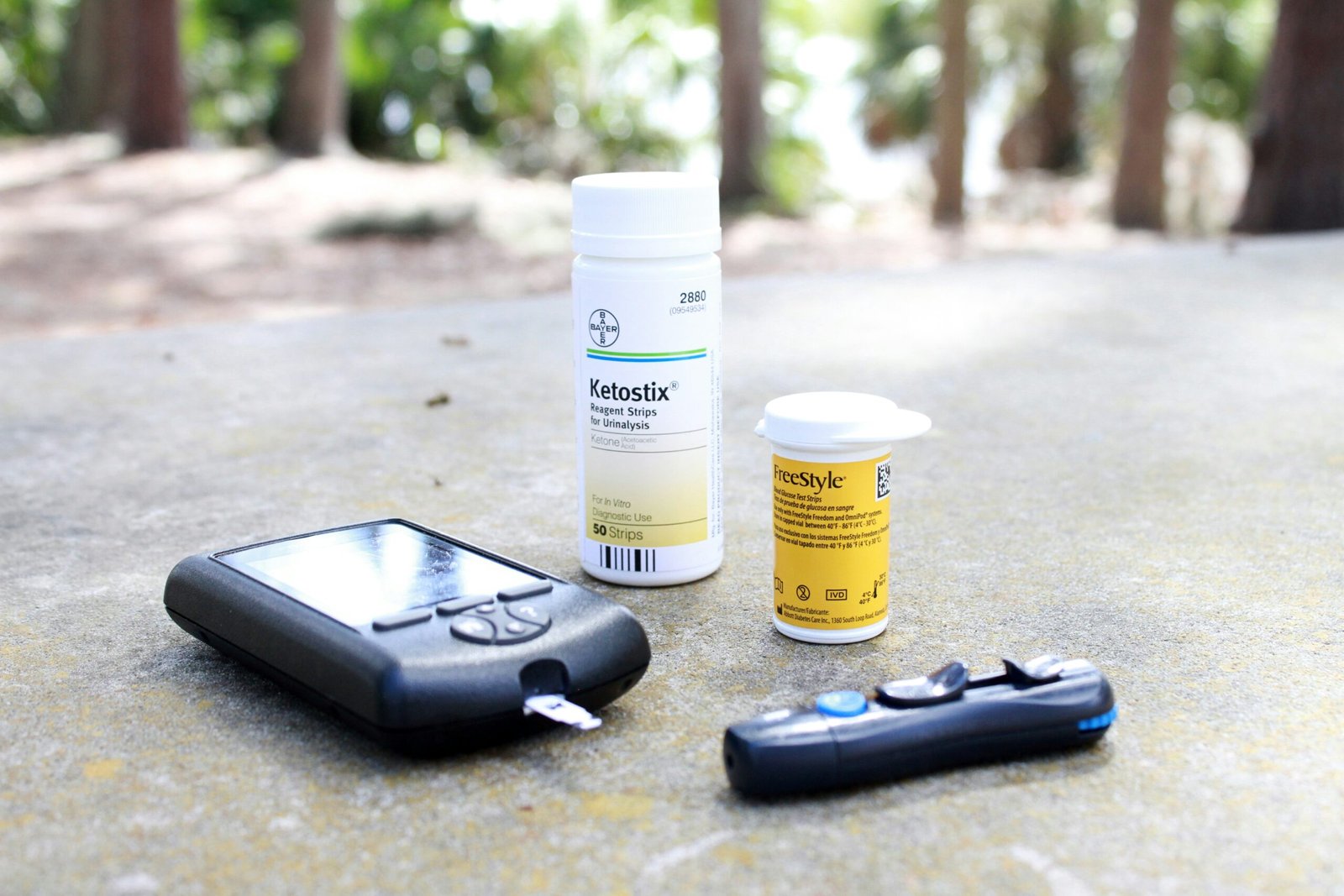Imagine you’re recovering from surgery, and your doctor prescribes oxycodone to manage your pain. While this medication can provide significant relief, a common concern arises: how long does oxycodone actually stay in your system? This question is crucial for many individuals who may be subject to drug testing or who are simply curious about the implications of their prescriptions.
Oxycodone is an opioid analgesic frequently used to treat moderate to severe pain. Due to its effectiveness, it is often prescribed after surgical procedures or for chronic pain management. However, as a potent medication, its use comes with a set of responsibilities and risks, including the potential for dependency and adverse effects. Understanding how long oxycodone remains in your body is essential not only for those taking the medication but also for their families, health care providers, and even employers.
This blog post will provide an in-depth examination of various factors affecting the duration of oxycodone in your system. We will discuss the detection times based on different testing methods, including urine, blood, and saliva tests. Furthermore, we will explore the various factors that can influence these detection periods, such as metabolism, age, body mass, and frequency of use.
By the end of this post, you will gain insights into how oxycodone operates within the body, the commonly accepted timelines for detection, and important considerations surrounding its usage. Understanding these elements is vital for making informed decisions regarding medication use and compliance with regulations.
What is Oxycodone?
Oxycodone is a semisynthetic opioid pain reliever that is primarily used in medical settings to treat moderate to severe pain. This prescription medication is often recommended for patients recovering from surgery, suffering from injury-related pain, or dealing with chronic pain conditions where other pain relievers might be insufficient. Oxycodone comes in various formulations, including immediate-release and extended-release forms, allowing for flexible dosing based on individual patient needs.
Upon ingestion, oxycodone interacts with specific receptors in the brain and the nervous system, known as opioid receptors. These interactions trigger a series of biochemical responses that ultimately reduce the perception of pain and enhance feelings of well-being. This effect is achieved by inhibiting the transmission of pain signals to the brain and modifying how the brain perceives these signals. Consequently, patients often experience significant relief from their pain, which is one of the reasons for oxycodone’s widespread medical use.
However, the use of oxycodone is accompanied by considerable concerns regarding the potential for dependence and misuse. As an opioid, oxycodone carries a risk of developing tolerance, where the body becomes accustomed to the drug, necessitating higher doses to achieve the same level of pain relief. This aspect makes it crucial for practitioners to closely monitor prescriptions and ensure that patients are aware of the risks involved. The potential for misuse highlights the importance of adhering to prescribed dosages and consulting healthcare providers about any concerns. Thus, while oxycodone serves as an effective therapeutic agent, its use must be approached with caution, underscoring the critical balance between pain management and safety.
General Timeline: How Long Does Oxycodone Stay in Your System?
Understanding how long oxycodone remains in the system requires a look into its pharmacokinetics, particularly its half-life. The half-life of oxycodone is typically around 3.5 to 4.5 hours. This measurement indicates the time it takes for half of the drug to be eliminated from the bloodstream. Consequently, this half-life plays a significant role in determining how long oxycodone will stay in your body. The complete elimination of oxycodone from an individual’s system generally takes longer than one might expect, primarily due to various factors affecting metabolism.
Typically, oxycodone will be cleared from the system within 24 to 48 hours after the last dose. However, this timeframe can vary greatly depending on several individual factors such as age, weight, liver function, overall health, and the duration of use. Chronic users may find oxycodone linger longer in their system due to the body’s adaptation to regular intake. Furthermore, hydration levels, diet, and metabolic rate can influence how effectively the body processes oxycodone.
It is also important to consider the method of drug testing being used, as oxycodone’s detection window can vary with different assays. For instance, urine tests typically can identify the drug for up to 3 to 4 days after the last use, while blood tests may detect oxycodone for a shorter duration. Therefore, understanding the general timeline of oxycodone clearance is crucial for individuals who are prescribed this medication, especially when considering potential drug tests or the planning of any necessary tapering of dosage.
Factors That Affect How Long Oxycodone Stays in Your System
The duration that oxycodone remains detectable in the body is influenced by several crucial factors. Understanding these factors can provide insights into how long this opioid may persist in an individual’s system. One of the primary determinants is the metabolic rate of the person. Individuals with a faster metabolism will typically process and eliminate oxycodone more swiftly than those with a slower metabolic rate. Variations in metabolism can arise from factors such as age, sex, and overall health condition.
The dosage and frequency of oxycodone use significantly impact its duration in the system. Higher doses or long-term use can lead to accumulation in the body, leading to a longer detection window. Conversely, a single, lower dose is likely to be eliminated more quickly. Furthermore, tolerance to the drug can develop over time, affecting how the body metabolizes oxygen, which may extend the time it remains in one’s system.
Body composition also plays a role in drug metabolism and elimination. Individuals with higher body fat percentages may have a slower elimination rate, as certain drugs, including opioids like oxycodone, can be stored in fatty tissues. Hydration levels should not be overlooked either; adequate hydration aids in the excretion processes through urine, possibly shortening the duration oxycodone remains detectable.
Genetic variations among individuals can also affect how oxycodone is metabolized. Some individuals possess genetic traits that lead to differing enzyme levels, influencing how quickly or slowly the drug is processed. Lastly, potential drug interactions could significantly alter the duration that oxycodone remains in the system, as certain substances that are taken concurrently may speed up or slow down its metabolism.
Detection Times of Oxycodone in Various Drug Tests
Oxycodone is a potent opioid medication often prescribed for pain management. However, understanding how long it can be detected in one’s system is vital for those subject to drug testing. Different drug testing methods vary in their detection windows for oxycodone, influenced by factors such as metabolism, frequency of use, dosage, and the individual’s physiological characteristics.
In urine tests, which are the most common for detecting oxycodone usage, the drug can typically be detected for approximately 3 to 4 days after the last ingested dose. However, chronic users may find that oxycodone is detectable for up to a week or longer, reflecting increased accumulation in the system. Urine tests look for the presence of oxycodone or its metabolites, allowing a reliable understanding of drug use within this timeframe.
Blood tests, on the other hand, have a shorter detection window. Oxycodone can usually be detected in the blood for about 24 hours post-consumption. This relatively brief span makes blood testing less common for routine drug screenings, but it can be necessary in scenarios requiring immediate results, such as in emergency medicine.
Saliva tests have become increasingly popular for on-site testing, such as in workplaces or during law enforcement activities. Oxycodone can be detected in saliva for around 1 to 4 days following use. This method serves as a non-invasive option but can be somewhat less reliable compared to urine tests due to potential variability in individual saliva production and other factors.
Lastly, hair follicle tests represent the longest detection window, with oxycodone potentially detectable for up to 90 days. This method analyzes the hair for traces of the drug, incorporating its history over time. Hair tests are less commonly used, primarily due to their higher costs and longer processing times. Ultimately, understanding these various detection times helps individuals and healthcare providers navigate the complexities surrounding oxycodone use and its implications in drug testing.
How to Clear Oxycodone from Your System Faster
Clearing oxycodone from the system can be a concern for users, especially for those preparing for drug tests or discontinuing use. While the process of elimination is primarily managed by the body’s metabolism, certain methods may expedite this process. However, it is important to approach such methods with caution and prioritize safety.
One of the most effective methods to assist the body in the elimination of oxycodone is to increase hydration. Drinking sufficient amounts of water not only helps to facilitate the detoxification process but also aids kidney function, allowing for a more efficient filtering of substances from the bloodstream. Furthermore, electrolyte-rich fluids can help maintain balance in the body during the detox process.
Engaging in regular physical exercise can also contribute to faster elimination. Physical activity boosts metabolism, which can enhance the body’s ability to metabolize oxycodone. Activities such as cardiovascular exercises—running, cycling, or swimming—can elevate heart rate and promote sweating, potentially expediting the excretion of toxins through neutral metabolic processes.
A healthy diet plays a crucial role in supporting the body during this detoxification phase. Consuming whole foods rich in antioxidants, vitamins, and minerals can strengthen the body’s systems. Foods such as fruits, vegetables, lean proteins, and whole grains should be prioritized to support overall health, which indirectly aids in faster processing of substances like oxycodone.
Some individuals consider detoxing practices to expedite oxycodone clearance. However, it is essential that these methods are approached carefully. Detox can often lead to adverse effects, particularly in those with a history of substance use disorders. Hence, medical supervision is strongly recommended when attempting to alter the detox process or when one is experiencing withdrawal symptoms.
It is crucial to consult healthcare professionals before implementing any detox strategy, as they can provide appropriate guidance tailored to individual circumstances and ensure safety throughout the process.
Risks of Stopping Oxycodone Suddenly
Oxycodone is a powerful opioid pain medication often prescribed for managing moderate to severe pain. While it can provide significant relief, discontinuing this medication suddenly poses several risks, particularly for individuals who have been using it for an extended period. The primary concern arises from the withdrawal symptoms that can develop when oxycodone is abruptly terminated.
Withdrawal symptoms can vary in severity but may include anxiety, nausea, vomiting, muscle aches, and insomnia. Individuals may experience profound physical symptoms, such as body aches, sweating, or tremors, as the body adjusts to the absence of the drug. Psychological symptoms such as irritability and heightened sensitivity to pain may also be prevalent, making the cessation process particularly challenging.
Furthermore, the risk of relapse into substance use increases when individuals attempt to manage withdrawal symptoms on their own. Many individuals revert to using oxycodone or similar opioids to relieve the distress associated with withdrawal, thereby perpetuating a cycle of dependence. A sudden cessation might prompt individuals to seek other substances or higher doses of pain relief, heightening the risk of overdose or other severe health consequences.
Given these potential risks, it is crucial for those considering stopping oxycodone to consult a healthcare professional. Medical guidance can facilitate a safer tapering process, which significantly mitigates withdrawal symptoms and reduces the likelihood of relapsing into substance abuse. Healthcare providers can offer tailored support and strategies to ease the transition away from oxycodone, allowing for better management of pain and emotional health during this critical period.
FAQs
When discussing oxycodone, many individuals often have questions surrounding its duration in the system, especially relating to personal circumstances such as regular usage patterns or medical needs. One of the most commonly asked questions is: how long does oxycodone stay in your system for regular users? Generally, oxycodone can be detected in urine for up to 3 days after the last dose for occasional users. However, for those who are consistent users, it may show up in urine tests for a longer period, extending to a week or more, depending on factors like metabolism and dosage.
Another frequent concern is regarding detection after a single use. Oxycodone can typically be detected in urine within hours after consumption and may remain detectable for approximately 1 to 3 days, contingent on the individual’s body composition and metabolic rate. These detection times are critical for individuals who may be subject to drug testing, whether in employment scenarios or medical evaluations.
A crucial point to consider is: how can one pass a drug test post-use? While abstaining from oxycodone before the test is the most effective strategy, it is also advisable to stay hydrated. Increased hydration may help dilute urine concentration, potentially aiding in passing certain types of drug tests. However, it is important to note that this method is not foolproof and could lead to further scrutiny in some cases.
Furthermore, a worry for regular users is the potential consequences of prolonged presence in the system. Chronic oxycodone use can lead to adverse health effects, including dependency and tolerance. It is advisable for individuals facing such concerns to consult healthcare professionals for guidance and support.
Conclusion
Understanding the duration that oxycodone remains detectable in the body is crucial for individuals who use this medication, whether as part of a prescribed treatment plan or recreationally. The half-life of oxycodone typically ranges between three to five hours, which signifies that it takes this time for the body to eliminate half of the drug. However, the complete clearance of oxycodone from the system can vary significantly, influenced by several factors such as age, metabolism, renal function, and the dosage used.
Moreover, the detection time for oxycodone in drug tests can differ depending on the type of test administered. For example, urine tests can usually detect oxycodone for up to three to four days following the last dose, while blood tests may only reveal its presence for about 24 hours. Hair follicle tests, however, can indicate oxycodone use for an extended period, sometimes even up to 90 days. Therefore, understanding these variances is critical for individuals concerned about the implications of drug testing, especially in professional settings or rehabilitation programs.
If you or someone you know is facing challenges related to oxycodone usage, it is advisable to seek professional guidance. Medical professionals can offer valuable insights into the safe use of oxycodone, ways to mitigate risks associated with drug testing, and suggestions for responsible management of any potential dependencies. Addressing these issues proactively can lead to informed decisions and better health outcomes. Overall, awareness of how long oxycodone stays in the system is an important aspect of responsible medication management.


